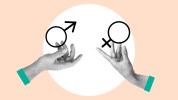-
Continue reading →: The political impact of tourism: a peacebuilding tourism experience
Written by Katerina Antoniou Peacebuilding tourism, a subset of peace tourism, has been defined as a form of tourism through which individuals “engage in peace-oriented travel specifically due to their professional capacity” (Antoniou, 2022). In other words, peace experts and peace-oriented professionals travelling for work can be considered peacebuilding tourists.…
-
Continue reading →: About to submit your manuscript? 5 top tips from your editor
1. Is it complete? The right version? Check…and check again! Remove contributor access from cloud based/file sharing platforms to keep things simple 2. Complete a Manuscript Submission checklist – you can find the right one for you here: https://www.e-elgar.com/author-hub/preparing-to-submit-your-manuscript/#submissionchecklist 3. Citations count! Early planning now can help disseminate your work…

Follow us online
Follow blog via email
Stay updated with our latest articles by joining our newsletter.













